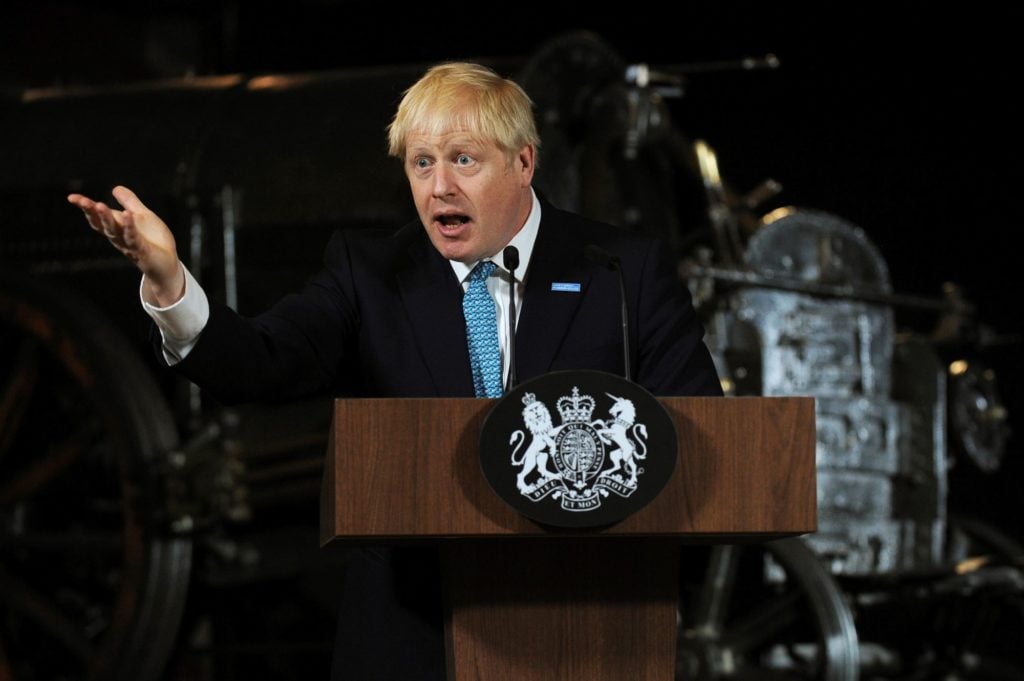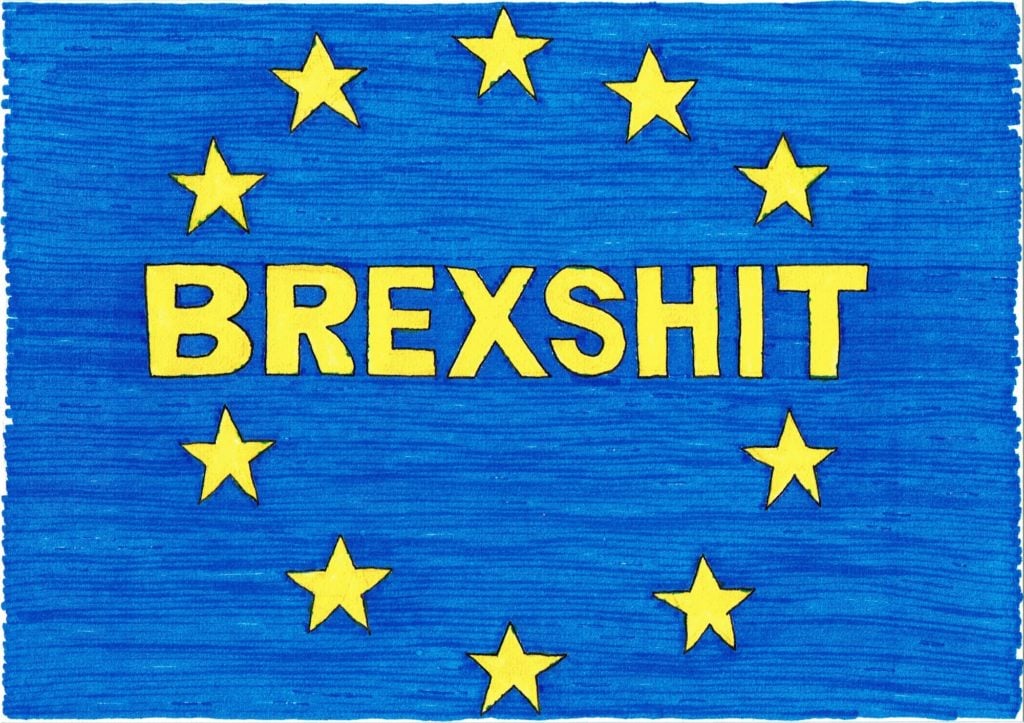Politics
Museums Across the UK Are Making Doomsday Plans for Brexit. Here Are Their Biggest Fears
Registrars are making contingency plans to avoid having valuable works of art damaged during arduous customs procedures.

Registrars are making contingency plans to avoid having valuable works of art damaged during arduous customs procedures.

by
Javier Pes

UK Museums are preparing for the worst as it looks increasingly likely that Britain will abruptly leave the European Union on October 31 without a divorce agreement, a fear fueled by Boris Johnson, the new Prime Minister.
Johnson’s majority in Parliament is down to one member, which has led to speculation that he may try to bypass the House of Commons to force Brexit through. Another concern is that his cabinet and special advisers have a new, avian-themed code name—operation Black Swan—for worst-case scenario planning.
Staff at UK’s leading museums, who are at the sharp end of making sure high-profile exhibitions go ahead, have been quietly charting their own “Black Swan” plans for months, artnet News has learned.
Since late 2018, UK museum registrars, who are responsible for the safety of works of art traveling between British and international institutions, have been working to minimize the chances of rare and fragile loans being delayed or damaged while in transit in the days and weeks after a possible hard Brexit.
Registrars are working on the assumption that the transportation of cultural artifacts between the UK and Europe will be disrupted after Brexit unless a last-minute transition deal is put in place. Meanwhile, museum directors are watching the situation closely, and preparing their institutions for possible long-term consequences.
“Major loan exhibitions are expensive undertakings and their financing is a constant challenge,” Alexander Sturgis, the director of the Ashmolean Museum of Art, tells artnet News. “The additional resources that will be required in the wake of Brexit will mean fewer and less ambitious exhibitions for the UK public.”
The Ashmolean’s current exhibition, “Last Supper in Pompeii,” is a collaboration with the National Archaeological Museum of Naples and the Archaeological Park at Pompeii. Returning artifacts to Italy when it closes in the new year could be far more complicated than receiving them earlier this summer because of the possible end of the free movement of goods and people between Britain and Europe.
Another of the biggest short-term concerns related to a hard Brexit is the likelihood of delays at Britain’s ports. Some fear that customs paperwork could potentially quadruple.
“Brexit will inevitably have an impact on the bureaucracy, time, and costs involved in receiving loans from EU museums and private lenders, and so will make exhibitions such as ‘Last Supper at Pompeii’ more expensive and difficult to mount,” Sturgis says.
A spokesperson for the National Gallery in London says it is “planning for all of the eventualities of Brexit,” and has kept in touch with the relevant government agencies. The museum is opening a big exhibition of Gauguin’s portraits in early October, which is a collaboration with the National Gallery of Canada in Ottawa. Next year, the National Gallery is due to present a big Titian presentation, followed by an exhibition of the Dutch Old Master, Nicolaes Maes. A National Galleries of Scotland spokesperson said it has also “considered a range of scenarios arising from Brexit, and how our activities and operations may be impacted in the coming period.”

Michael Landy, Brexshit (2018). © Michael Landy. Courtesy the artist, Thomas Dane Gallery, and the Drawing Biennial.
In December, a group of UK registrars met to discuss Brexit implications and to enumerate their greatest concerns. Their report, illustrated with a work by Michael Landy titled Brexshit (2018), emphasizes that transport costs are likely to rise. And while Johnson has pledged money for prisons and the health service (as well as to create art freeports), he has thus far said nothing to indicate that nearly a decade of cuts to national museum funding will be reversed.
Here are museum registrars’ main concerns:
Increased Costs: Registrars were told by a panel of experts, including a representative from the UK government, to expect shipping delays and potential currency fluctuations that will increase the cost of loans. They were urged to build contingencies into budgets. The pound is now trading at €1.08, its weakest since the 2016 EU Referendum.
Transport Delays: Museums have been advised to avoid shipping works between the EU and UK in the weeks immediately following a hard Brext. The port of Dover in particular should be avoided, and registrars have also planned for scenarios in which flights are grounded. Due to increases in customs procedures and a lack of infrastructure, long delays are expected at the border. If wait times are significant, registrars fear, the likelihood of damage to objects will increase, which could cause lenders to withdraws from sending artworks.
Export Licences Required: Works of art on loan that are due to return to the EU after a no-deal Brexit may need an export licence. Registrars have been advised to gather alternative evidence to satisfy customs that goods were in free circulation to help obtain a licence.
Visas for Couriers and Curators: The end of free movement by British and EU nationals could greatly complicate safeguarding works of art by curators and conservators, who often act as couriers, if those couriers now need travel documents. In a worst-case scenario, short-term visas might be required, which could make even well-planned exhibitions difficult to execute—and perhaps make last-minute shipment changes impossible.
Funding Uncertainty: While costs are likely to rise, Johnson has given no indication so far that the UK national museums’ budgets will be increased. Due to Brexit, the government has announced a one-year, rather than three-year, spending review, which is due to be announced in September. The continued uncertainty about government funding will complicate planning big projects and shows.
In the meantime, museums will be closely watching the political situation. It is unlikely that a spectacular blockbuster show will be a casualty of Brexit. Instead, the effects will be more subtle and insidious: Museums’ bottom line for exhibitions looks bound to suffer, and bureaucracy seems likely to increase.